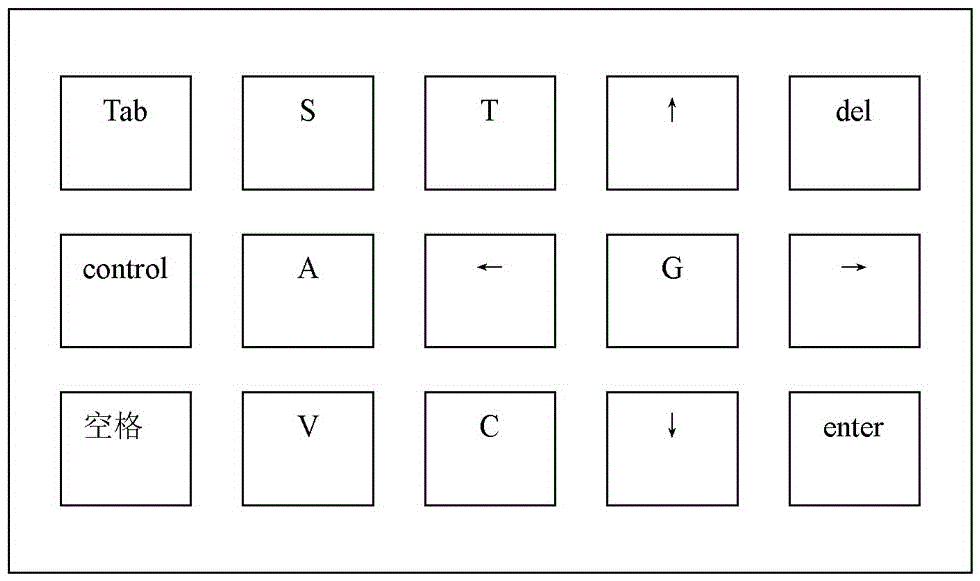Keypad for genome sequence proofreading
A genome sequence and keypad technology, applied in the input/output direction of user/computer interaction, can solve the problems of complicated operation, slow input speed, inconvenience, etc., to achieve the effect of convenient proofreading operation, improve input efficiency, and improve proofreading efficiency.
- Summary
- Abstract
- Description
- Claims
- Application Information
AI Technical Summary
Problems solved by technology
Method used
Image
Examples
Embodiment Construction
[0010] A small keyboard for genome sequence proofreading, including a keyboard and an interface, the keyboard includes 15 keys, consisting of A, T, G, C, S, V, ↑, ↓, ←, →, Tab, Control, del, enter and the space key.
[0011] The interface is a USB interface.
[0012] Such as figure 1 As shown, the keyboard layout includes 15 keys, which are divided into three rows, with 5 keys in each row, including 6 letter keys and 9 function keys commonly used in genome sequence proofreading. The order is as follows: the first row from left From left to right are the Tab button, S button, T button, ↑ button, del button; the second row from left to right is the control button, A button, ← button, G button, → button; the third row from left to right The order is the space key, the V key, the C key, the ↓ key, and the Enter key.
[0013] When using the above-mentioned small keyboard for proofreading genome sequences, the small keyboard only needs to be connected to a computer through a USB ...
PUM
 Login to View More
Login to View More Abstract
Description
Claims
Application Information
 Login to View More
Login to View More - R&D
- Intellectual Property
- Life Sciences
- Materials
- Tech Scout
- Unparalleled Data Quality
- Higher Quality Content
- 60% Fewer Hallucinations
Browse by: Latest US Patents, China's latest patents, Technical Efficacy Thesaurus, Application Domain, Technology Topic, Popular Technical Reports.
© 2025 PatSnap. All rights reserved.Legal|Privacy policy|Modern Slavery Act Transparency Statement|Sitemap|About US| Contact US: help@patsnap.com

